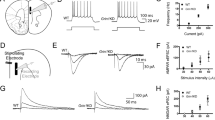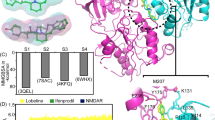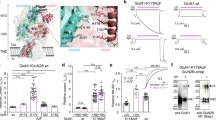Abstract
N-methyl-D-aspartate receptor (NMDAR) mediated excitotoxicity is implicated as a proximate cause of neurodegeneration in Huntington Disease (HD). However, this hypothesis has not been tested rigorously in vivo. NMDAR NR2B-subunits are the predominant NR2 subunit expressed by the striatal medium spiny neurons that degenerate in HD. To test this hypothesis, we crossed a well validated murine genetic model of HD (Hdh(CAG)150) with a transgenic line overexpressing NMDAR NR2B-subunits. In the resulting double mutant line, we show exacerbation of selective striatal neuron degeneration. These results provide the first direct in vivo evidence of NR2B-NMDAR mediated excitotoxicity in the context of HD. Our results are consistent with prior suggestions that direct and/or indirect interactions of mutant huntingtin with NMDARs are a proximate cause of neurodegeneration in HD.
Similar content being viewed by others
Article PDF
Author information
Authors and Affiliations
Rights and permissions
About this article
Cite this article
Heng, M., Detloff, P., Wang, P. et al. In vivo evidence for NMDA receptor mediated excitotoxicity in a murine genetic model of Huntington Disease. Nat Prec (2008). https://doi.org/10.1038/npre.2008.1996.1
Received:
Accepted:
Published:
DOI: https://doi.org/10.1038/npre.2008.1996.1



